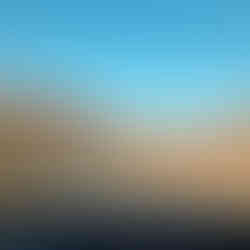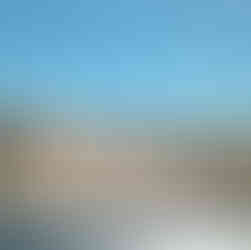Desert Highways & Heartfelt Reflections in Namibia's Karas Region
- Lynn Nestingen

- Aug 6, 2024
- 6 min read
Updated: Aug 27, 2024
Philip and I enjoyed many family road trips during our 38 years together, and I have so many fond memories of our travels with the kids in tow and a heavy pop-up trailer pulled behind by Oscar I, Philip's beloved Chevy Tahoe.
And as mom and I often joke during my phone calls —I'm "on the road again, just can't wait to get on the road again..." ;-)
So here I am, on the road again, having just finished a week of traveling 2,782 km through the southern region of Namibia—without Philip in person, but certainly with him carried in my heart.
And we're already into week 2 (more on that in my next post), but for now, I wanted to share the highlights from the first week of our adventure.
As it happens, I have the privilege of traveling for what the Ministry calls a "verification exercise" of Adult Education sites in three separate regions of Namibia over the course of three weeks.

The goal of this trip is to visit the adult learning centers to "verify" Promoter (teacher) credentials and "real" number of student learners for their Adult Upper Primary Education (AUPE), Family Literacy Programs (FLP), and Community Learning and Development Center (CLDC) programs.
Each of these programs provide literacy training to adults, not only in the basic rudiments but also in skill development for economic self-empowerment (basically, acquiring and honing skills for possible small business enterprises).
I am traveling with two of my colleagues, Zulu and Penne - both brilliant leaders in the Department. Penne is is the Chief Education Officer and Zulu is a Senior Education Officer in Adult Learning. I couldn't ask for better team to travel and work with. For this first week, I rode along with Zulu as we visited various adult learning sites in the Karas regions.

For this first verification week, we drove the Ministry "buggie" (Toyota SUV) from Windhoek south to Keetmanshoop, then down to Noordoewer on the South African border, Aussenkehr, east to Aroab, back south to Rosh Pinah, and finally straight across to Lüderitz before heading back to Windhoek.
Essentially, we covered most of the main roads in the southern part of the country, which features the driest deserts and the least dense population in all of Namibia.
The roads were mostly paved (except on our way to Aroab) and always two-laned, not four. With very little traffic here, though, we passed many double-length semi-trucks carrying loads to or from South Africa and/or Botswana, which was rarely a problem on these long, open stretches where you could see for kilometers ahead.
Always a little nail-biting on our Colorado mountain road trips with Philip pulling the heavy camper, but not here on these long, open roads.

As mentioned, we (several ministry employees and I) will travel through five of Namibia's 14 regions: Karas (dark blue), Otjozondjupa (light green), and Erongo. Windhoek is in the Khomas region, and we drove through Hardap (purple) to get to Karas.
Instead of rambling on and on about our week, I thought I'd give you my top 10 highlights from this first week on the road.....
Long, desolate roads surrounded by never-ending, spectacular desert scenery. Kilometer by kilometer, the landscape was incredibly pristine and diverse. The pictures below shows the vast and beautiful landscape, and to think that every picture is from a different road with more still in my saved photo folder.

2. Spreading Philip's ashes on the Orange River from the bridge that crosses into South Africa. I couldn't help but think of our Utah trip with the kids back in perhaps 2002 and the brave drive down to the Green River! Philip would be thrilled to see the Orange River—he would absolutely love it here!

3. Visiting Aussenkher, a settlement farming community with housing built of reed that covered the hillside along the Orange River. Vineyards surround the area, and I understand that most residents or migrants work in the hectares of grape fields that line the hillsides.
Here, we met with the AUPE promoter for one of their adult learning classes in their outdoor community center.

4. Sipping coffee with the sunrise alone outside our guest house along the Orange River, overlooking South Africa just north of Noordoewer. A beautiful HEN moment (Hic Et Nunc).

5. Driving two hours on a gravel road through the desert to the quaint, isolated village of Aroab where we visited a CLDC (Community Learning Development Center) that encourages skill development such as jewelry and perfume making, plus computer skills when and IF they will ever connect the computers still in storage (two years later and still waiting - sigh..)

Funded by Japan, this building is an example of funding support that the Ministry could certainly secure more of through relationship building and grant writing - an area I hope to enhance through my work in the PC.
6. Touring the mining village of Rosh Pinah and meeting the promoter of their AUPE site located in the "Location" settlement outside the main village.
From what I was told, the village is supported by mining of lead and zinc, and they (the "location" residents of the settlements outside of town) were moved farther away from the mines because residents were becoming sick. And, sadly, it sounds like they are still experiencing weird illnesses. I can only imagine....


The promoter here taught outside her home, and I asked if I could possibly see inside the house where she lives with her four children. Wow and wow.
Unfortunately, but intentionally, I didn’t take photos out of respect for her personal space, but it was an amazing opportunity to see what it might be like to live in this tiny "zinc" house with steel corrugated siding.

7. Sitting amongst six inmates during a class session for AUPE at the Lüderitz Prison—to be in the same room with these young men in orange jumpsuits as they participated in class to learn to read and write is something I will never forget.
A little unnerving, to be honest, since we didn’t expect to literally go inside the prison. We were escorted through three heavy steel doors, each locked with a 3-inch skeleton key. I’d love to share more, but we’ll have to connect for a drink to do so. We were also not allowed to take photos inside, so I scanned the room to keep these images fresh. Gray, dirty, loud, and old....but incredibly moving to meet Robert - a 19 year old learning to write his own name.

8. Walking through Kolmanskuppe, the "ghost town," which reminded me of some of Colorado's deserted towns. But instead of gold, the discovery was a sandy source of high-quality diamonds.
Here, residents built the village in the architectural style of a German town, with amenities including a hospital, ballroom, power station, school, skittle alley, theater, sports hall, casino, and more. I poured out at least a full cup of sand from each of my shoes after touring the town, inside and out!


9. Buying a potted Quiver Tree, which we saw sparsely dotting the desert landscape and growing only amongst the barren rock.
Quivers are known for looking upside down because their "leaves" resemble roots. Since diamonds have been found in Namibia, people say that if one of these trees is dug up, diamonds will be found where it has grown.
However, because these trees are considered blessed, nobody wants to dig them up. So, we went to the nursery in Keetmanshoop to purchase a quiver tree for $60 NAD (about $3 USD).


10. Seeing Namibian wild desert horses and other "wild" animals such as ostriches, oryx, and springboks loitering in their true desert home.
Yes, you can see them on a safari, but for me, it was truly thrilling to see them randomly throughout the barren landscape.

I could go on and on, and as you can see, this week has been one, impressionable highlight of my Peace Corps experience so far.
I'm certainly learning a lot about the Adult Education programs and all the challenges that come with offering classes in these remote villages.
Technology is certainly one of their biggest hurdles, but there are also issues with facilities, resources, and transportation. While the sites are there, the promoters are also busy with their own lives as well as the adult learners who are trying to live on bare necessities.
For now, I am absorbing what I can and hope to offer some expertise and support for grants and "whatnots" (a common phrase spoken here ;-)
So, here's to another week in Namibia— a land of amazing beauty and pristine open space!
I’ve been here nearly three months, and the time is just sailing by. But I'm living in many HEN moments as I savor the day and embrace this blessed opportunity.
I'm on the road again...and can't wait to get on the road again as we travel north to the Otjozondjupa region.
Love and hugs,
Lynn













































